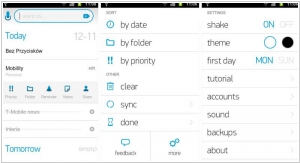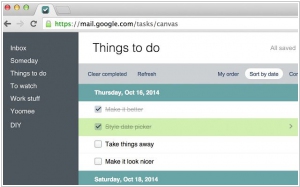Any.do vs Google Tasks
September 10, 2023 | Author: Adam Levine
Any.do and Google Tasks are both popular task management applications with their own unique features and approaches.
Any.do is a comprehensive task management tool that offers a range of features to help users stay organized. It allows users to create tasks, set due dates and reminders, add subtasks, attach files, and even collaborate with others on shared tasks. Any.do also provides additional features like a built-in calendar, location-based reminders, and the ability to add tasks via voice commands. With its sleek design and user-friendly interface, Any.do aims to provide a seamless and intuitive task management experience.
On the other hand, Google Tasks is a simpler and more minimalist task management solution integrated with other Google services. It offers a clean and straightforward interface where users can create tasks, set due dates, and organize them into lists. Google Tasks is seamlessly integrated with other Google apps such as Gmail and Google Calendar, allowing users to easily access and manage their tasks within their existing Google ecosystem.
See also: Top 10 Productivity software
Any.do is a comprehensive task management tool that offers a range of features to help users stay organized. It allows users to create tasks, set due dates and reminders, add subtasks, attach files, and even collaborate with others on shared tasks. Any.do also provides additional features like a built-in calendar, location-based reminders, and the ability to add tasks via voice commands. With its sleek design and user-friendly interface, Any.do aims to provide a seamless and intuitive task management experience.
On the other hand, Google Tasks is a simpler and more minimalist task management solution integrated with other Google services. It offers a clean and straightforward interface where users can create tasks, set due dates, and organize them into lists. Google Tasks is seamlessly integrated with other Google apps such as Gmail and Google Calendar, allowing users to easily access and manage their tasks within their existing Google ecosystem.
See also: Top 10 Productivity software
Any.do vs Google Tasks in our news:
2018. Google released Google Tasks mobile app
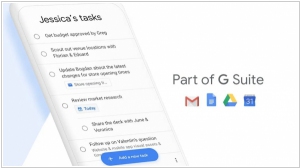
Google has introduced a new application that integrates with its suite of productivity tools: Google Tasks. This app provides users with a dedicated platform to create, view, and edit their task lists and to-dos, including those generated from the new Gmail or Google Calendar. The app itself follows a conventional approach to to-do lists, allowing users to efficiently manage their tasks and even divide them into subtasks. The drag-and-drop interface enables task prioritization, and users can set "due dates" for timely reminders. What sets this app apart is its ability to link tasks back to their original email source in Gmail, and users can also conveniently view their tasks within Google Calendar.
2015. To-do app Any.do 3.0 adds collaboration features
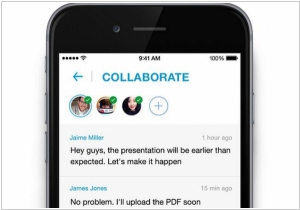
Any.do has introduced version 3.0 of its app for iPhone, Android, Web, Chrome, and Mac, packed with over 150 new features. Notably, this release includes dedicated support for Android tablet users. One of the standout additions is a dynamic zooming feature that enables users to navigate seamlessly between multiple to-do lists, swiftly zooming in on a specific list of interest. Any.do has leveraged fluid gestures to enhance accessibility and streamline task management. Furthermore, the app now allows collaboration across different types of groups. Similar to Evernote's approach of unifying personal and business documents within a single identity, Any.do enables users to share lists as side projects, collaborate with work teams, or include household members. Shared list participants gain editing privileges, ensuring efficient collaboration and task completion.
2014. Task manager Any.do rolls out business version with collaboration features
The productivity service, Any.do, is expanding its offerings beyond its initial consumer focus by introducing a new set of features and pricing plans tailored for businesses. In the latest release, Any.do 2.0, colleagues and teams can utilize Any.do's task list application to collaborate on tasks, share files, and more. These advanced features will be available in both the free version and the premium version of Any.do 2.0. The premium version will be a subscription-based service priced at $5 per month or $45 per year. Free users will have the ability to collaborate with up to two members per task, while paid users can collaborate with an unlimited number of people. Additionally, free users will be limited to file uploads of a maximum of 5 MB from Dropbox and can only share five "Moments" (Any.do's daily planner) per month. In contrast, paid users will not have such restrictions on file uploads and sharing.
2014. Any.do unveils a browser-version of its to-do list app
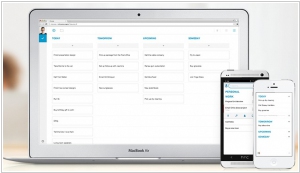
The mobile task list application Any.do has recently introduced a free web-based version that seamlessly synchronizes tasks across multiple devices. The web application offers different viewing modes, allowing users to see tasks either in a single column or across all folders simultaneously. If you are familiar with Any.do's mobile apps, you will find the web version quite intuitive. The primary objective is to provide accessibility to your task list from anywhere, with the web platform playing a vital role in achieving this goal. Upon launching the new web experience, you will be presented with a list of pending tasks. However, there are additional features to explore. Any.do has incorporated two modes specifically designed to take advantage of the spacious screen offered by a full web browser.

